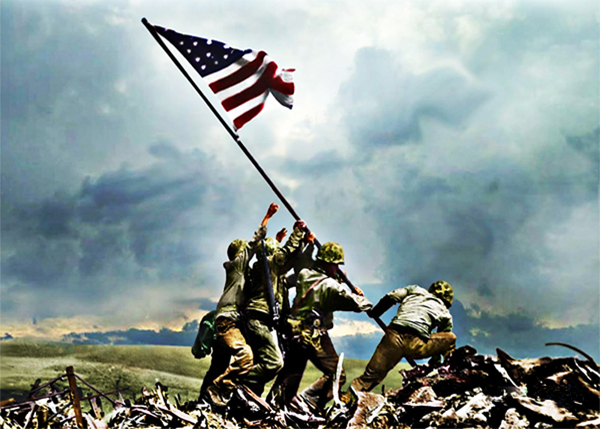
U.S. flag raised on Iwo Jima on February 23, 1945
U.S. flag raised on Iwo Jima: During the bloody Battle for Iwo Jima, U.S. Marines from the 3rd Platoon, E Company, 2nd Battalion, 28th Regiment of the 5th Division take the crest of Mount Suribachi, the island’s highest peak and most strategic position, and raise the U.S. flag.
Marine photographer Louis Lowery was with them and recorded the event. Americans fighting for control of Suribachi’s slopes cheered the raising of the flag, and several hours later more Marines headed up to the crest with a larger flag.
Joe Rosenthal, a photographer with the Associated Press, met them along the way and recorded the raising of the second flag along with a Marine still photographer and a motion-picture cameraman.
Rosenthal took three photographs atop Suribachi. The first, which showed five Marines and one Navy corpsman struggling to hoist the heavy flag pole, became the most reproduced photograph in history and won him a Pulitzer Prize. The accompanying motion-picture footage attests to the fact that the picture was not posed.
Of the other two photos, the second was similar to the first but less affecting, and the third was a group picture of 18 Marines smiling and waving for the camera. Many of these men, including three of the Marines seen raising the flag in the famous Rosenthal photo, were killed before the conclusion of the Battle for Iwo Jima in late March.
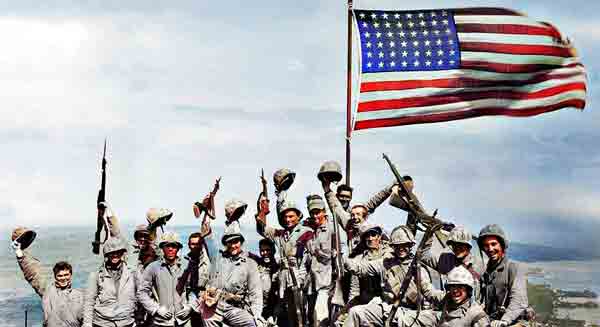
In early 1945, U.S. military command sought to gain control of the island of Iwo Jima in advance of the projected aerial campaign against the Japanese home islands.
Iwo Jima, a tiny volcanic island located in the Pacific about 700 miles southeast of Japan, was to be a base for fighter aircraft and an emergency-landing site for bombers.
On February 19, 1945, after three days of heavy naval and aerial bombardment, the first wave of U.S. Marines stormed onto Iwo Jima’s inhospitable shores.
The Japanese garrison on the island numbered 22,000 heavily entrenched men. Their commander, General Tadamichi Kuribayashi, had been expecting an Allied invasion for months and used the time wisely to construct an intricate and deadly system of underground tunnels, fortifications, and artillery that withstood the initial Allied bombardment.
By the evening of the first day, despite incessant mortar fire, 30,000 U.S. Marines commanded by General Holland Smith managed to establish a solid beachhead.
During the next few days, the Marines advanced inch by inch under heavy fire from Japanese artillery and suffered suicidal charges from the Japanese infantry. Many of the Japanese defenders were never seen and remained underground manning artillery until they were blown apart by a grenade or rocket, or incinerated by a flame thrower.
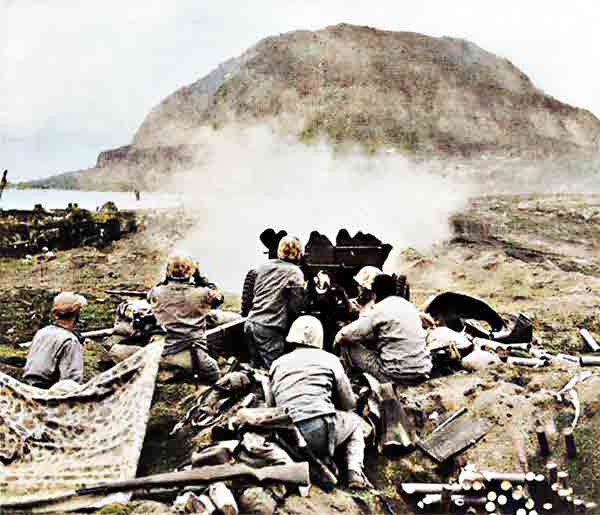
While Japanese kamikaze flyers slammed into the Allied naval fleet around Iwo Jima, the Marines on the island continued their bloody advance across the island, responding to Kuribayashi’s lethal defenses with remarkable endurance.
On February 23, the crest of 550-foot Mount Suribachi was taken, and the next day the slopes of the extinct volcano were secured.
By March 3, U.S. forces controlled all three airfields on the island, and on March 26 the last Japanese defenders on Iwo Jima were wiped out. Only 200 of the original 22,000 Japanese defenders were captured alive.
More than 6,000 Americans died taking Iwo Jima, and some 17,000 were wounded.
Related:
Pacific: The Lost Evidence
How U.S. Marines Won the Battle of Iwo Jima
The U.S. Raised the Iwo Jima Flag, then Occupied the Islands for 23 Years
Continued ...
History.com / Wikipedia / Encyclopedia Britannica /
National WWII Museum.org / NAVY.mil / Department Of Defense / USMC Museum /
My Heritage / Military.com /
Daily Mail
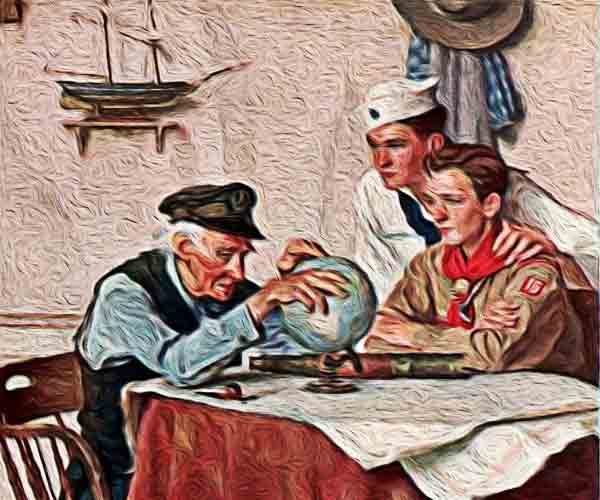
Understanding Military Terminology
Reattack Recommendation
(DOD) An assessment, derived from the results of battle damage assessment and munitions effectiveness assessment, providing the commander systematic advice on reattack of a target.
Also called RR.
See also Assessment; Battle Damage Assessment; Munitions Effectiveness Assessment; Target.
Joint Publications (JP 3-60) Joint Targeting
Receiving Ship
(DOD) The ship in a replenishment unit that receives the rig(s).
Joint Publications (JP 5-0) Joint Bulk Petroleum and Water Doctrine
Reception
(DOD)
1. All ground arrangements connected with the delivery and disposition of air or sea drops.
2. Arrangements to welcome and provide secure quarters or transportation for defectors, escapees, evaders, or incoming agents.
3. The process of receiving, offloading, marshalling, accounting for, and transporting of personnel, equipment, and materiel from the strategic and/or intratheater deployment phase to a sea, air, or surface transportation point of debarkation to the marshalling area.
Joint Publications (JP 3-35) Deployment and Redeployment Operations
Joint Publication - Department of Defense Dictionary of Military and Associated Terms
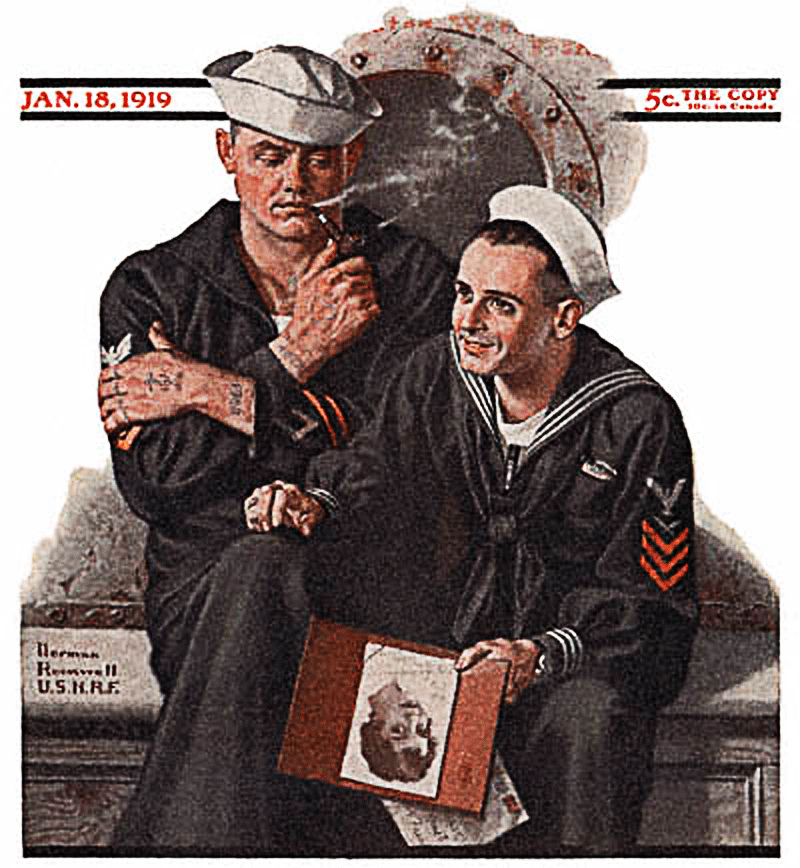
The Old Salt’s Corner

Under the wide and starry sky,
Dig the grave and let me lie.
Glad did I live and gladly die,
And I laid me down with a will.
This is the verse you grave for me:
Here he lies where he longed to be;
Here is the sailor, home from the sea,
And the hunter home from the hill.
~ Robert Louis Stevenson

“I’m Just Sayin”
“No man or woman who tries to pursue an ideal in his or her own way is without enemies.”
“Opinions differ most when there is least scientific warrant for having any.”
“The man who never makes a mistake always takes orders from one who does.
No man or woman who tries to pursue an ideal in his or her own way is without enemies.”
~ Daisy Bates

“Thought for the Day”
“I am not afraid... I was born to do this.”
“I would rather die than do something which I know to be a sin,
or to be against God's will.”
“One life is all we have and we live it as we believe in living it.
But to sacrifice what you are and to live without belief,
that is a fate more terrible than dying.”
“I would rather die than do something which I know to be a sin,
may God put me there;
and if I am,
may God so keep me.”
“Get up tomorrow early in the morning,
and earlier than you did today,
and do the best that you can. Always stay near me,
for tomorrow I will have much to do and more than I ever had,
and tomorrow blood will leave my body above the breast.”
~ Joan of Arc

“What I Learned”
“Success usually comes to those who are too busy to be looking for it.”
“The question isn't who is going to let me;
it's who is going to stop me.”
“A creative man is motivated by the desire to achieve,
not by the desire to beat others.”
“The smallest minority on earth is the individual.
Those who deny individual rights cannot claim to be defenders of minorities.”
“We are fast approaching the stage of the ultimate inversion:
the stage where the government is free to do anything it pleases,
while the citizens may act only by permission;
which is the stage of the darkest periods of human history,
the stage of rule by brute force.”
~ Ayn Rand

Mr. Answer Man Please Tell Us: The Origins of Valentine’s Day
Valentine’s Day occurs every February 14. Across the United States and in other places around the world, candy, flowers and gifts are exchanged between loved ones, all in the name of St. Valentine.
But who is this mysterious saint and where did these traditions come from? Find out about the history of Valentine’s Day, from the ancient Roman ritual of Lupercalia that welcomed spring to the card-giving customs of Victorian England.

The Legend of St. Valentine
The history of Valentine’s Day - and the story of its patron saint - is shrouded in mystery. We do know that February has long been celebrated as a month of romance, and that St. Valentine’s Day, as we know it today, contains vestiges of both Christian and ancient Roman tradition.
The Catholic Church recognizes at least three different saints named Valentine or Valentinus, all of whom were martyred. One legend contends that Valentine was a priest who served during the third century in Rome. When Emperor Claudius II decided that single men made better soldiers than those with wives and families, he outlawed marriage for young men. Valentine, realizing the injustice of the decree, defied Claudius and continued to perform marriages for young lovers in secret. When Valentine’s actions were discovered, Claudius ordered that he be put to death. Still others insist that it was Saint Valentine of Terni, a bishop, who was the true namesake of the holiday. He, too, was beheaded by Claudius II outside Rome.
Other stories suggest that Valentine may have been killed for attempting to help Christians escape harsh Roman prisons, where they were often beaten and tortured. According to one legend, an imprisoned Valentine actually sent the first “valentine” greeting himself after he fell in love with a young girl–possibly his jailor’s daughter–who visited him during his confinement. Before his death, it is alleged that he wrote her a letter signed “From your Valentine”, an expression that is still in use today. Although the truth behind the Valentine legends is murky, the stories all emphasize his appeal as a sympathetic, heroic and - most importantly - romantic figure. By the Middle Ages, perhaps thanks to this reputation, Valentine would become one of the most popular saints in England and France.
Continued ...
Related:
Six Surprising Facts About St. Valentine's Day
The Many Myths Behind the Inspiration for Valentine's Day (Who Was the Real St. Valentine?)
History Channel / Wikipedia / Encyclopedia Britannica /
Quora / Smithsonian / National Geographic /
The Origins of Valentine’s Day (YouTube) 
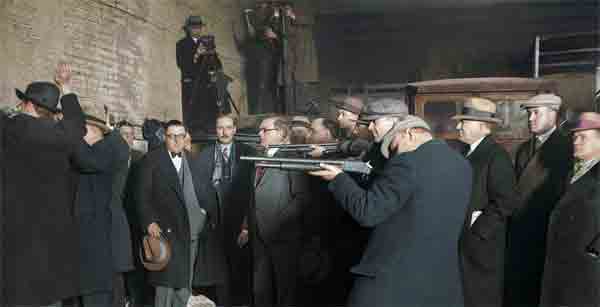
Mr. Answer Man Please Tell Us: The St. Valentine’s Day Massacre
The St. Valentine’s Day Massacre shocked the world on February 14, 1929, when Chicago’s North Side erupted in gang violence. Gang warfare ruled the streets of Chicago during the late 1920s, as chief gangster Al Capone sought to consolidate control by eliminating his rivals in the illegal trades of bootlegging, gambling and prostitution.
This rash of gang violence reached its bloody climax in a garage on the city’s North Side on February 14, 1929, when seven men associated with the Irish gangster George “Bugs” Moran, one of Capone’s longtime enemies, were shot to death by several men dressed as policemen.
The St. Valentine’s Day Massacre, as it was known, remains an unsolved crime and was never officially linked to Capone, but he was generally considered to have been responsible for the murders.

The Rise of Scarface: Al Capone And Chicago
From 1924 to 1930, the city of Chicago gained a widespread reputation for lawlessness and violence. Not coincidentally, this phenomenon coincided with the reign of chief crime lord Al “Scarface” Capone, who took over from his boss Johnny Torrio in 1925. (Torrio, who was seriously wounded in an assassination attempt in 1924, had “retired” to Brooklyn.)
Prohibition, ushered in by the passage of the 18th Amendment in 1920, had greatly increased the earnings of America’s gangsters through bootlegging (the illegal manufacture and sale of alcohol) and speakeasies (illicit drinking establishments), as well as gambling and prostitution.
Capone’s income from these activities was estimated at some $60 million a year; his net worth in 1927 was around $100 million.
Continued ...
Related:
How the Prohibition Era Spurred Organized Crime
The Night Prohibition Ended
See The St. Valentine's Day Massacre of 1929 - In Color
History Channel / Wikipedia / Encyclopedia Britannica /
Chicago Magazine / Chicago Tribune / CBS Chicago /
The Mob Museum.org / Crime Museum.org / Block Club Chicago.org /
The St. Valentine’s Day Massacre (YouTube) 

NAVSPEAK aka U.S. Navy Slang
Training Anchorage (TRANCH): A frustrating, fuel-saving method of practicing battle tactics electronically among ships while at anchor, usually within sight of an attractive liberty port.
Training Aids: Logically, these are items used to assist by demonstration some point in a training lecture. On submarines, there are also Sonar Training Aids which are any meaty foods with a phallic shape.
Training Videos: Porn videos.
Transistor Theory: Naval explanation for how electrons travel backwards and holes actually carry electrical current. Just press the I Believe button.
(Often referred to by civilian instructors when explaining to baffled sailors the haphazard components that seem to work by sheer magic such as transistors, zener diodes, joint effect field effect transistors, shockley diodes, metal oxide field effect transistors, etc.)
Akin to PFM (Pure Fucking Magic).
Trap: A fixed-wing arrested landing on an aircraft carrier. In the helo world, the Rapid Securing and Transfer (RAST) on the deck of a “small boy”.
Trice Up a rack: “All hands heave out and trice up.”
Or jump out of your rack and make it.
(Originally referred to hammocks, in days of yore before berthing spaces.)
(Originally referred to hammocks, in days of yore before berthing spaces.)
More correctly, the “trice” is the bottom (third) rack, being built to fold up against the bulkhead/stanchion (see above), so when the command “Trice-up” was given, the rack would be folded up, allowing compartment cleaners to sweep and swab under that bottom rack.
Triced Up: Trapped in a rack more cramped then usual, as a result of shipmates opening one's rack while one is sleeping in it (after they discover one forgot to secure it shut before getting in).
(It is usually impossible to be triced up in a top rack, as top racks usually have no ceiling.)
Wiktionary.org

Just for you MARINE
Trade-school: Refers to graduate of one of the Military Academies.
TRAM: Tractor, Rubber-tired, Articulated steering, Multi-purpose.
T-Rats: Tray ration, nickname for Unitized Group Ration, a ration heated and served to a group of servicemembers.
Wikipedia.org

Naval Aviation Squadron Nicknames
HT-18 Helicopter Training (HT) Squadron ONE EIGHT - nicknamed the “Vigilant Eagles”
United States Navy - Marine Corps Commander, Helicopter Training Air Wing FIVE - Naval Air Station Milton, Florida. / HT-18: March 1, 1972 - present
Wikipedia.org

Where Did That Saying Come From?

“A little of what you fancy does you good:”
Meaning: A euphemistic way of expressing the benefits of sex.
History: This proverbial saying was first the title of a vaudeville song, made famous by the risqué Victorian singer Marie Lloyd. Lloyd was an immensely popular music hall performer in England towards the end of Queen Victoria's reign and into the early 20th century, much to the chagrin of the moralists of the day, who did everything they could to prevent her from performing. This included having her refused entry to the USA in 1913 for “moral turpitude”.
The songs she made popular were apparently fairly harmless but she managed to deliver even chaste material with a certain lewdness. The style she adopted was of a winking familiarity with the audience, all of whom were of course happy to play along with every double entendre.
The chorus of “A Little of What You Fancy Does You Good”, goes:
I always hold in having it if you fancy it
If you fancy it that’s understood
And suppose it makes you fat?
I don’t worry over that
‘Cos a little of what you fancy does you good.’”

No one present at performances imagined that Lloyd was singing about cream cakes, although the line has in fact been used to advertise them in recent years. The sexual innuendo that was ever-present in the music hall has now largely been forgotten.
Marie Lloyd has been a continuing influence on British variety and comedy acts, being the template for artists like Max Miller and inspiration for the saucy euphemism of the Carry On film series. It is clear that Mae West (“I'm the kinda girl who works for Paramount by day, and Fox all night”) also took inspiration from Lloyd's (“I sits amongst the cabbages and peas”) manner of stage patter.
Phrases.org.uk

Science & Technology

FEATURED: AugLimb: A compact robotic limb to support humans during everyday activities
• Iceland's volcanic eruption the longest in half a century
This is what it looks like when a black hole snacks on a star
• Game-changer for clean hydrogen production
• Effect of electrons with negative mass in novel semiconductor nanostructures
The microbial molecule that turns plants into zombies
• Chemical discovery gets reluctant seeds to sprout
• Infants exposed to domestic violence have poorer cognitive development
Discovery highlights the complex lifestyles of frontline immune cells
• Capturing origins and early adaptive processes underlying therapy response to cancer treatments
• First-of-its-kind quantitative assessment for sustainable agriculture
Phys.org / MedicalXpress / TechXplore

A new fleet of Moon landers will set sail, backed by private companies
• A huge forest experiment aims to reduce wildfires. Can it unite loggers and environmentalists?
Milk fueled Bronze Age expansion of “eastern cowboys” into Europes
• Forget oil or water. In Iceland, well diggers seek to tap a volcano's magma
SARS-like viruses may jump from animals to people hundreds of thousands of times a year
• Study of up to 40,000 people will probe mysteries of Long Covid
Antiaging advice from single-celled creatures: Build better proteins
• Can “zero COVID” countries continue to keep the virus at bay once they reopen?
Science AAAS

Bizarre News (we couldn’t make up stuff this good - real news story)
Bizarre pig-faced shark found dead in the Mediterranean Sea. Is it real?
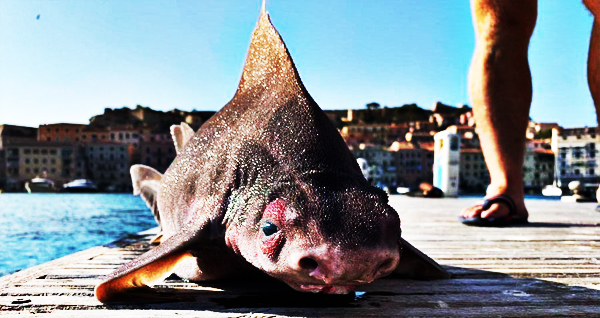
Apparently, the species is known to grunt like a hog when pulled from the water
In the water, it looks like any other shark: a swift, gray hunter with steep dorsal fins poking out of its back. But take a close look at its face, and suddenly you're locking eyes with a real-life pig emoji.
Meet the angular roughshark (Oxynotus centrina) — better known in some harbors as the “pig fish”. Naval officers in Elba (an Italian island in the Mediterranean Sea not far from Tuscany) created an online stir when they pulled one of these beauties from the water on September 3, posting pictures of the snub-headed oddity on Facebook.

If the shark's flat head, wide-set eyes and blunt, pinkish snout weren't enough to earn the “pig fish” its nickname, then a single utterance from its mouth should put all doubt to rest.
“It is commonly called a ‘pig fish’ because when it comes out of the water it emits a kind of grunt”, Yuri Tiberto of the Elba Aquarium in Italy, told Toscana Media News following the recent discovery.
According to the Elba Island app Facebook page, naval officers found the roughshark floating dead in the water before they hauled it onto the pier. The sharks are plentiful in the Mediterranean, where their spiny dorsal fins and relatively large bodies make them vulnerable to fishing operations, according to the International Union for Conservation of Nature (IUCN) Red List of Threatened Species.
Because of this, angular roughshark populations have been in decline for decades, and the species is considered vulnerable (that's one slot safer than “endangered” on the Red List's scale).
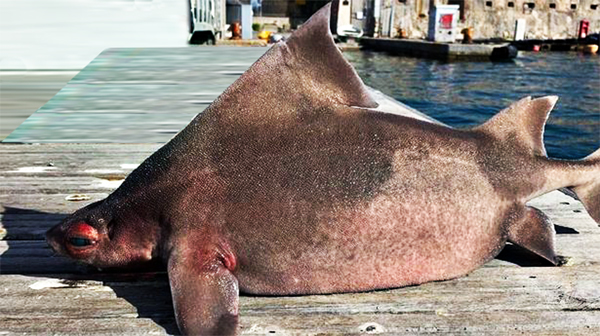
The shark also lives throughout the East Atlantic Ocean, from Norway to South Africa. They have been spotted between 200 and 2,200 feet (60 to 670 meters) below the ocean's surface, and they usually grow to be about 3.3 feet (1 m) in length, according to the IUCN.
The Mediterranean Sea has no shortage of strange sharks. In July 2019, fishers in the Mediterranean trawled up a “naked” shark - that is, a shark seemingly born with no skin or teeth. Astonishingly, the shark had lived to be 3 years old before it died in the fishers' nets. Scientists have yet to see anything else like it.
Related: Elusive angel shark shows off its ninja ambush skills in rare underwater footage
SEVEN unanswered questions about sharks
These freakish creatures were not meant to see the light of day
TWENTY times sharks made our jaws drop
Fish with “human teeth” caught in North Carolina
Live Science (09/15/2021) 


SONG FACTS
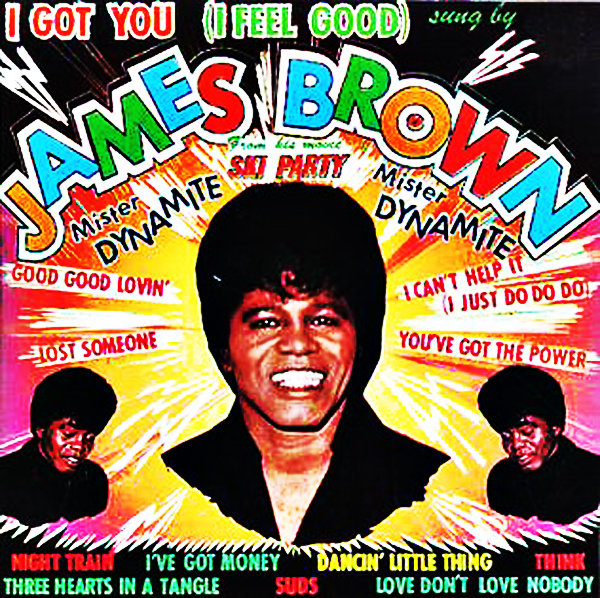
“I Got You (I Feel Good)”  - James Brown
- James Brown
Album: I Got You (I Feel Good)
Released 1965 
“I Got You (I Feel Good)”  is a reworking of
“I Found You”
is a reworking of
“I Found You”  a song recorded and released by Yvonne Fair and produced by James Brown in 1962. Fair was one of Brown's backup singers on the road.
a song recorded and released by Yvonne Fair and produced by James Brown in 1962. Fair was one of Brown's backup singers on the road.
This is the song that became Brown's signature tune and gave him his famous catch phrase, “I Feel Good”.
“I Got You (I Feel Good)”  Brown recorded it in September 1964 and leased it, along with some of his other songs, to Smash Records, who planned to release it as a single but couldn't because Brown's label, King Records, filed a lawsuit.
In October 1964, a judge ruled that Smash Records would be allowed to issue only instrumental recordings by Brown, and all masters of vocals by JB would become property of King Records.
Brown recorded it in September 1964 and leased it, along with some of his other songs, to Smash Records, who planned to release it as a single but couldn't because Brown's label, King Records, filed a lawsuit.
In October 1964, a judge ruled that Smash Records would be allowed to issue only instrumental recordings by Brown, and all masters of vocals by JB would become property of King Records.
The song was pulled, but Brown had already been promoting it: he played it on the road (335 nights a year) and performed it on The T.A.M.I. Show and Shindig, as well as a movie called Ski Party.
Brown then recorded a new version of the song in May 1965 at Criteria Studios in Miami, creating the first gold record to come out of Criteria, where the Eagles did
“Hotel California”  and Derek and the Dominos did
“Layla”
and Derek and the Dominos did
“Layla”  . Released by King Records, it shot to the top of the R&B charts, where it stayed for six weeks, and also went to #3 on the Hot 100, Brown's highest placing on that chart.
. Released by King Records, it shot to the top of the R&B charts, where it stayed for six weeks, and also went to #3 on the Hot 100, Brown's highest placing on that chart.
The original 1964 version of
“I Got You (I Feel Good)”  had no guitar. When Brown redid it 1965, he made his screams more pronounced and added some instrumentation, including more sax. Some of the players on the recording were Maceo Parker on sax, his brother
Melvin Parker on drums, Nat Jones on organ and Bernard Odum on bass.
had no guitar. When Brown redid it 1965, he made his screams more pronounced and added some instrumentation, including more sax. Some of the players on the recording were Maceo Parker on sax, his brother
Melvin Parker on drums, Nat Jones on organ and Bernard Odum on bass.
This is a great example of a funk song with lyrics supporting the groove. It's not poetry, but Brown's series of single-syllable words are accented to hit the beats and support the song's rhythm.
Some of the movies that used this song include:
Good Morning, Vietnam,
The Nutty Professor,
https://en.wikipedia.org/wiki/White_Men_Can't_Jump,
Undercover Brother and
Transformers.
TV shows that used it include:
The Simpsons,
Miami Vice and
The Cosby Show.
A little chart history on James Brown:
He had 16 #1 R&B hits, third to Aretha Franklin (20) and Stevie Wonder (18). On the Billboard Hot 100,
“I Got You (I Feel Good)”  was the highest-ranking of Brown's 91 chart entries, 44 of which made the Top 40. His next-highest entry was
“Living In America”
was the highest-ranking of Brown's 91 chart entries, 44 of which made the Top 40. His next-highest entry was
“Living In America”  , which made #4 in 1986. The Godfather of Soul made more Hot 100 visits without a #1 hit than any other artist.
, which made #4 in 1986. The Godfather of Soul made more Hot 100 visits without a #1 hit than any other artist.
MORE SONGS
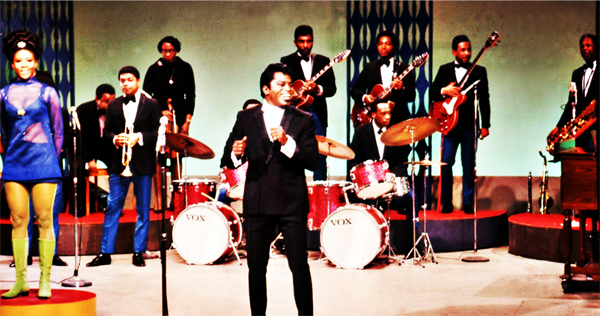
“No, No, No, No” (1955) 
“Please Please Please” (1958) 
“I Want You So Bad” (1959) 
“The Bells” (1960) 
“Bewildered” (1960) 
“Lost Someone” (1960) 
“I Love You Yes I Do” (1961) 
“Out of Sight” (1963) 
“All Along the Watchtower” (1964) 
“I Got You (I Feel Good)” (1965) 
“Papa’s Got a Brand New Bag” (1965) 
“I’s a Man’s Man’s Man’s World” (1966) 
“Don't Be A Dropout” (1966) 
“Cold Sweat” (1967) 
“Let Yourself Go” (1967) 
“Licking Stick” (1968) 
“Say It Loud, I'm Black & I'm Proud” (1968) 
“Give It Up or Turnit a Loose” (1969) 
“Mother Popcorn (You’ve Got to Have a Mother for Me)” (1969) 
“Super Bad” (1970) 
“The Boss” (1973) 
“The Payback” (1974) 
“Papa Don’t Take No Mess” (1974) 
“Living In America” (1985) 
James Brown official site (James Brown Discography) / Rock & Roll Hall of Fame / Billboard / All Music / Song Facts /
Ultimate Classic Rock / James Brown
Image: “I Got You (I Feel Good) (album)” by James Brown
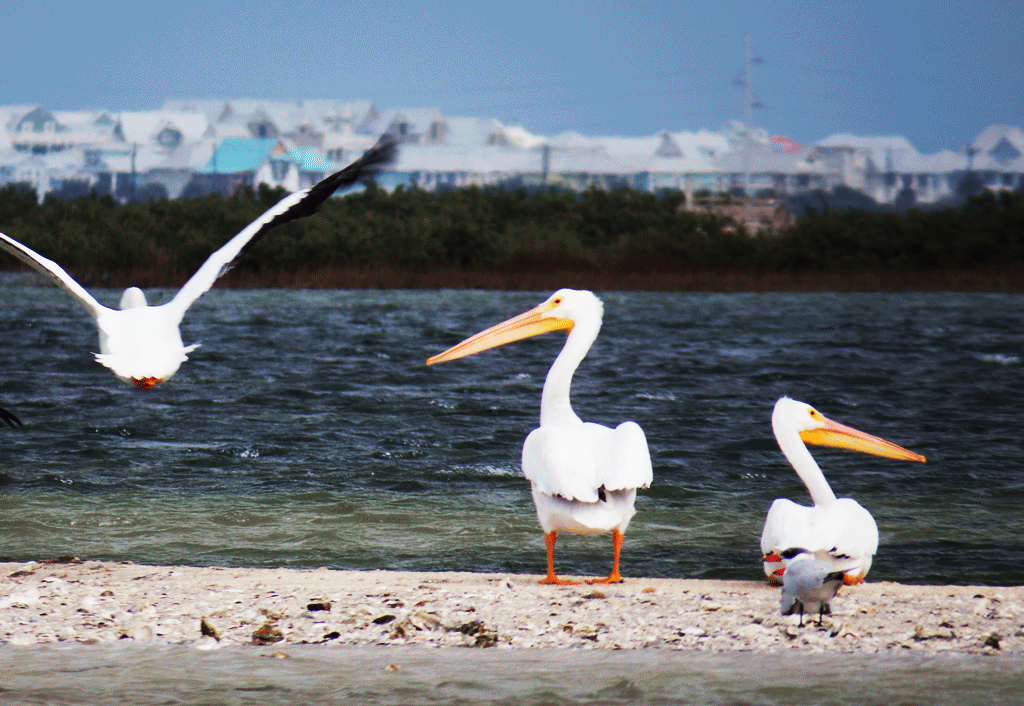
Trivia
● Which island was once named the “Island of the Pelicans”?
Answer to Trivia
READ MORE: History Channel
● What was piloted by Vietnam veteran Stringfellow Hawke?
Answer to Trivia
READ MORE: GetTV
● Which islands were the subject of a war between Argentina and United Kingdom in the 1980s?
Answer to Trivia
READ MORE: IWM.org.UK
● Which Hawaiian island is entirely privately owned?
Answer to Trivia
READ MORE: Travel Awaits
● Which Dutch artist painted “Girl with a Pearl Earring”?
Answer to Trivia
READ MORE: Wikipedia

A Test for People Who Know Everything
(Alex: The correct response will be two words. The first word will begin with the letter “N”. The second word will begin with “O”.)
From the Jeopardy Archives Category - “JUST SAY ‘N.O.’” ($200)
“Avian term for someone who stays up late.”
Answer to Jeopardy READ MORE: Live Science
From the Jeopardy Archives Category - “JUST SAY ‘N.O.’” ($400)
“This gas is used by dentists as an anesthetic.”
Answer to Jeopardy READ MORE: WebMD
From the Jeopardy Archives Category - “JUST SAY ‘N.O.’” ($600)
“It's the delicacy seen here.”
Answer to Jeopardy READ MORE: Wikipedia
From the Jeopardy Archives Category - “JUST SAY ‘N.O.’” ($800)
“It's a French phrase whose sentiment is that the rich should take care of the poor.”
Answer to Jeopardy READ MORE: Wikipedia
From the Jeopardy Archives Category - “JUST SAY ‘N.O.’” ($1,000)
“This astronomical site in D.C. is responsible for the U.S. time service.”
Answer to Jeopardy READ MORE: USNO.NAVY.mil

Joke of the Day

“Retirement Choices - Where To Live”
You can live in Phoenix, Arizona where.....
1. You are willing to park 3 blocks away because you found shade.
2. You've experienced condensation on your butt from the hot water in the toilet bowl.
3. You can drive for 4 hours in one direction and never leave town.
4. You have over 100 recipes for Mexican food.
5. You know that "dry heat" is comparable to what hits you in the face when you open your oven door.
6. The 4 seasons are: tolerable, hot, really hot, and ARE YOU KIDDING ME??!!
You can live in California where.....
1. You make over $250,000 and you still can't afford to buy a house.
2. The fastest part of your commute is going down your driveway.
3. You know how to eat an artichoke.
4. You drive your rented Mercedes to your neighborhood block party.
5. When someone asks you how far something is, you tell them how long it takes to get there rather than how many miles away it is.
You can live in New York City where.....
1. You say "the city" and expect everyone to know you mean Manhattan.
2. You can get into a four-hour argument about how to get from Columbus Circle to Battery Park, but can't find Wisconsin on a map.
3. You think Central Park is “nature”.
4. You believe that being able to swear at people in their own language makes you multi-lingual.
5. You've worn out a car horn.
6. You think eye contact is an act of aggression.
You can live in Maine where.....
1. You only have 4 spices: salt, pepper, ketchup, and Tabasco.
2. Halloween costumes fit over parkas.
3. You have more than one recipe for moose.
4. Sexy lingerie is anything flannel with less than 8 buttons.
5. The four seasons are: winter, still winter, almost winter, and construction.
You can live in Texas where.....
1. You can rent a movie and buy bait in the same store.
2. “Y'all” is singular and “all y'all” is plural.
3. “He needed killin'” is a valid defense.
4. Everyone has 2 first names: Billy Bob, Jimmy Bob, Mary Sue, Betty Jean, Mary Beth, etc.
You can live in Colorado where.....
1. You carry your $3,000 mountain bike atop your $500 car.
2. You tell your husband to pick up Granola on his way home and he stops at the day care center.
3. A pass does not involve football or dating.
4. The top of your head is bald, but you still have a pony tail.
You can live in Midwest where.....
1. You've never met any celebrities, but the mayor knows your name.
2. Your idea of a traffic jam is 10 cars waiting to pass a tractor.
3. You have had to switch from “heat” to “A/C” on the same day.
4. You end sentences with a preposition: “Where's my coat at?”
5. When asked how your trip was to any exotic place, you say, “It was different!”
You can live in Florida where.....
1. You eat dinner at 3:15 in the afternoon.
2. All purchases include a coupon of some kind--even houses and cars.
3. Everyone can recommend an excellent dermatologist.
4. Road construction never ends anywhere in the state.
5. Cars in front of you are often driven by headless people.


































